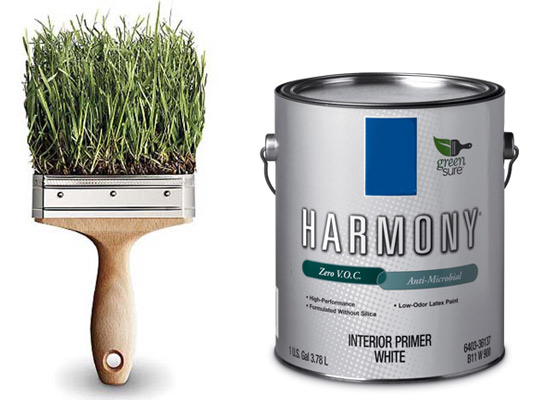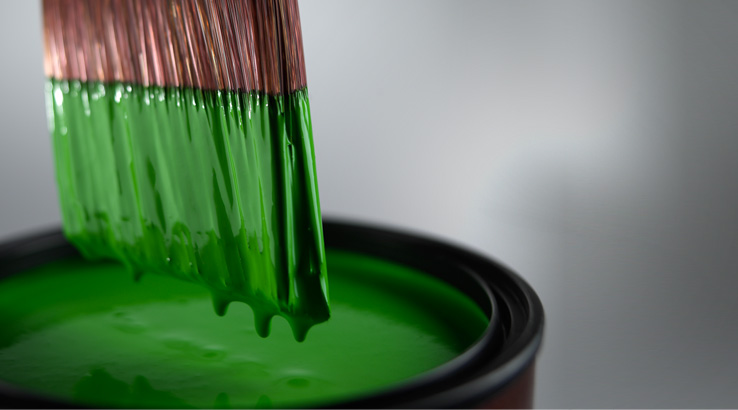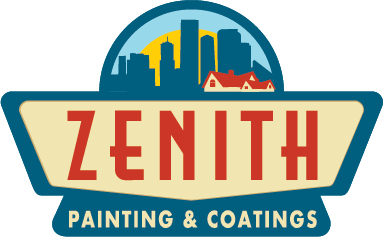
All across the world and especially in Colorado, Zenith’s painters are becoming more conscious of the impact our consumer choices have on the environment. For years, paints have been seen as a problem for the environment, to the extent that the EPA has rated paint materials among its five most hazardous substances. This classification is due to the cocktail of hazardous chemicals that make up most paints. Some of these chemicals include, formaldehyde, arsenic and plastics but the most threatening chemical of all is, VOCs. VOC stands for Volatile Organic Compounds. These are released into your home when the paint is applied and continue to be emitted throughout the lifetime of your home. Thankfully, we have made extensive scientific progress for the public health and certain paint manufacturers have come onto the market that avoid these toxic chemicals.
Why Are VOCs Bad?
Volatile Organic Compounds, are present at 1000 times the natural concentration when regular paint is being applied, according to the World Health Organization. It is critically important for homeowners to understand what these chemicals are and what their effects can be. VOCs are unstable, carbon-containing compounds that easily vaporize into the air we breath. These chemicals can be responsible for headaches, damage to the liver and kidneys, and even have been proven to cause cancer. Children and the elderly are especially susceptible to the negative effects of these poisons. Furthermore, the damage that VOCs do is not limited to just your home. When VOCs are exposed to the oxygen in the air, they generate ozone which is a harmful greenhouse gas. These implications occur when painting begins as only 50% of the VOCs are released within a year of completing the job.
Alternatives
Given the myriad of concerns surrounding the toxicity of paint, it is comforting to know there are safe alternatives. Previously, it was believed that VOCs were an essential part of paint. This is because the solvents required to keep the paint as a liquid until it is applied to the wall, were thought to need an oil base. The oil based solvents that were typically used included white spirit, formaldehyde and toluene, a variety of other alcohols, ketones, acetates and aromatic compounds. After the consumer backlash against these dangerous chemicals, paint manufacturers went back to the drawing board to develop paints that could work without the use of oil-based solvents. This was the birth of Low VOC paint and VOC free paint. Paints that are labeled as low-VOC must have a concentration no greater than 380 g/L while VOC free paint cannot have more than 5 g/L. Choosing products that use fewer VOCs is a great step to improve your family’s health while also reducing your carbon footprint.
There are also organic, natural, and “eco” paint alternatives. Currently in the United States, there is no set criteria for what constitutes an organic paint. This means it is up to the consumer to research exactly what the manufacturer means when they claim their product is organic.

Natural paints are paints whose formulas consist primarily of naturally occurring materials. This is an easy way to avoid VOCs but just because paint is natural, doesn’t mean it is non-toxic paint. Cadmium is a harmful material that is naturally occurring and is used in some yellow pigments. Cases like this reinforce the importance of meaningful research into exactly what you are buying and exposing to your family. On a similar note, some paints have adopted the EcoPaint slogan. Depending on the company, this designation means different things but it is helpful in narrowing down the possibilities as they are typically safer and have a lower carbon footprint than their peers. To help navigate this confusing world, Ethical Consumer released a simple set of guidelines to follow when choosing paint. Generally, plant-based, water-borne paints are the best buy, followed by plant-based, solvent-borne ones with natural solvents. Try to avoid those using titanium dioxide.
The market for eco friendly paints has drastically grown in the past few years. This has caused prices to plummet, making environmentally friendly paints affordable and competitive. Sherwin Williams, for instance, has released multiple lines of paint that conform to a host of different environmental and safety standards that are priced alongside their conventional paints. This is a big step to eliminate our homes of harmful VOCs and has made these developments accessible to everyone.
Conclusion
Trying to be a responsible consumer while balancing the needs of your home, your health and your planet can be a daunting task. That is why it is important to find professionals who can recommend the best fit for your situation. At Zenith Painting & Coatings, we understand the importance of customer health and the health of our environment. That is why we are happy to help you choose a safe and effective product that will leave your home looking remarkable.


